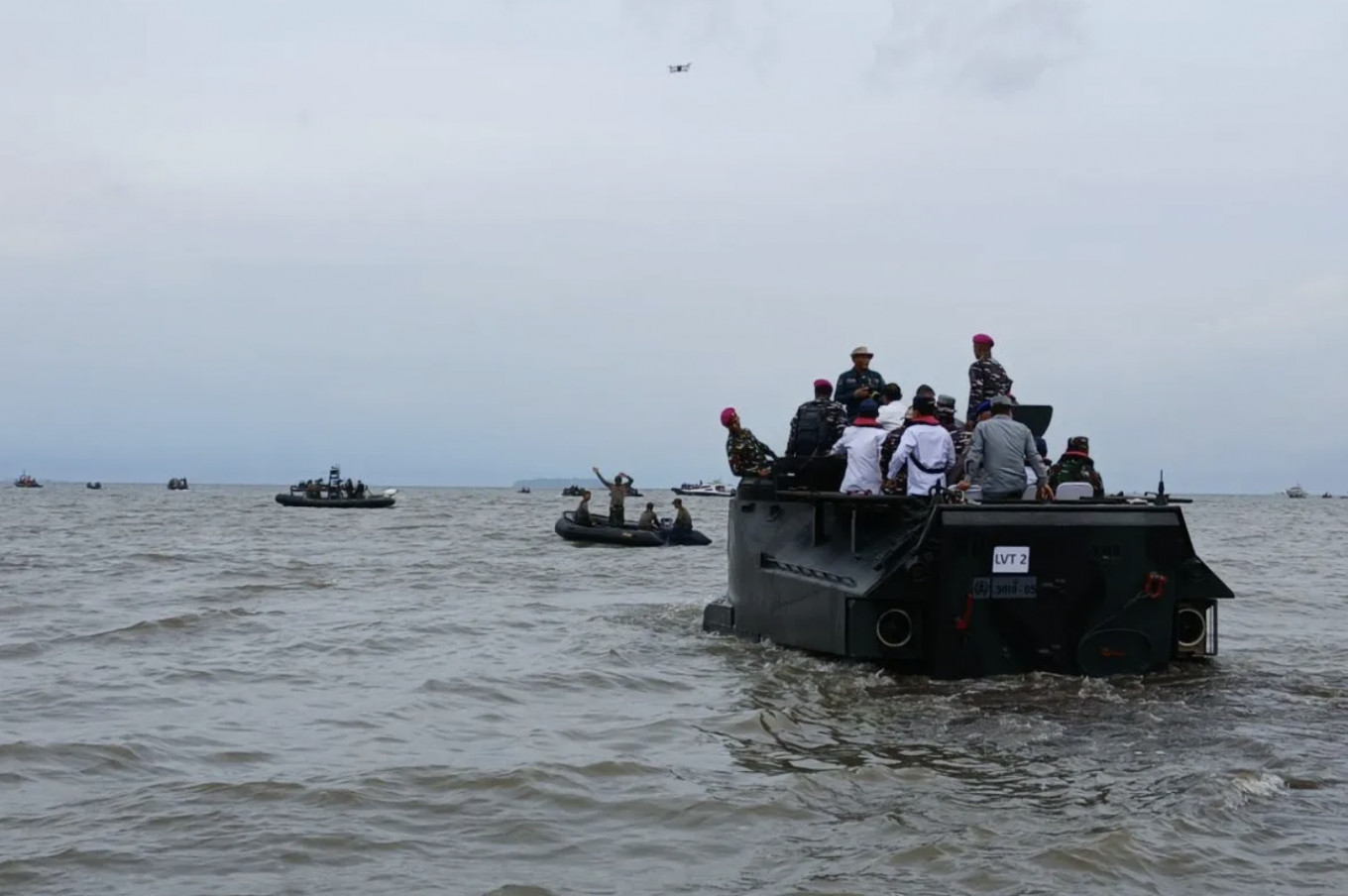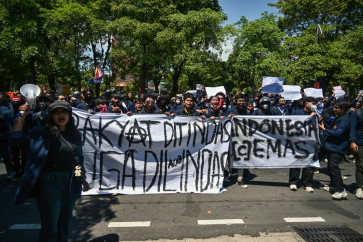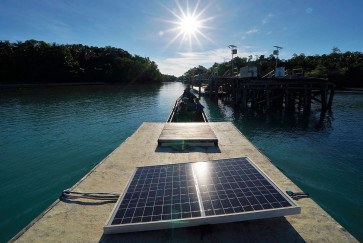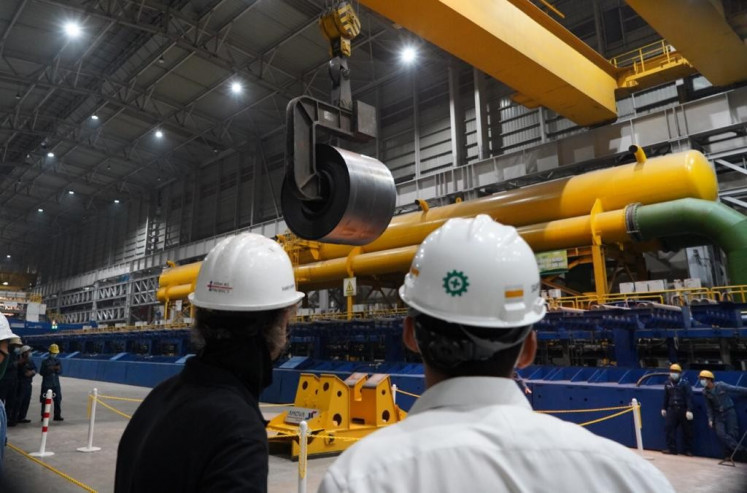Popular Reads
Top Results
Can't find what you're looking for?
View all search resultsPopular Reads
Top Results
Can't find what you're looking for?
View all search resultsPriceless waters
Our seas and coasts should remain open to ensure the livelihoods of coastal communities and protect marine biodiversity.
Change text size
Gift Premium Articles
to Anyone
T
he sprawling sea fence of unexplained origin in Tangerang, Banten, that has impeded fisherfolk’s access to the sea has sparked a fierce debate about the issue of unlicensed land reclamation.
We cannot put a price tag on our waters, particularly when it is still unclear who installed the 30-kilometer bamboo barrier off Tangerang’s coast and for what purpose.
The fence stands some 700 meters from the shoreline in zones designated for public use, such as fishing and energy management.
So far, the government investigation suggests the fence lacked a marine spatial utilization activity (KKPRL) license, making it illegal. According to a 2022 government regulation in lieu of law, the KKPRL is a basic requirement for obtaining a maritime business permit.
It is feared that the unlicensed fence could damage the marine habitat and affect the livelihoods of more than 4,000 fisherfolk in the area.
The Indonesian Ombudsman estimates that fisherfolk could collectively suffer between Rp 7.7 billion (US$474,137) and 9 billion a year in operational costs alone, while experts say the fence could decrease the income of fishers by tens of billions a year.
That already gives us enough reason to argue that our seas and coasts should remain open to ensure the livelihoods of coastal communities and protect marine biodiversity.
At least 17 million people living along Indonesia's nearly 55,000 km of coastline depend on the sea for their livelihoods. If the central government in Jakarta cannot address the outrageously long bamboo fence in its own backyard in Tangerang, who will stand up for the millions of coastal communities across the country?
It is hard to believe how such a sprawling illegal installation could go unchecked for so long under the noses of the authorities.
The fence is believed to have first been noticed by the public in May 2023, when it was half a kilometer long. Some fishermen reportedly notified the Banten Marine and Fisheries Service about the structure in August of last year, when it was 7 km in length. It remains unclear how it managed to reach 30 km since.
The only claim of responsibility for the fence has come from a group of unproven credibility calling itself Jaringan Rakyat Pantura (North Coast People’s Network). The group said local communities had funded and installed the fence to prevent further coastal erosion. They also said local fisherfolk had used the sprawling offshore barrier to cultivate shrimp and harvest mussels.
That claim raised widespread doubt about whether the network could have pooled enough money for the project.
We have also received reports that local fisherfolk have complained that the fence is impeding their access to the sea, giving rise to doubts about the claim that the fence was community-backed.
There has been speculation on social media that private companies could have misused their permits to build the barrier as part of a reclamation project to which the government has turned a blind eye.
Land reclamation is a highly debated topic. While it can provide much-needed space for expanding cities, developing new housing and commercial areas, it permanently alters the natural properties of coastal resources and therefore carries serious risks to the environment and can hurt the livelihoods of those dependent on the sea.
Maritime Affairs and Fisheries Minister Sakti Wahyu Trenggono recently said he suspected the fence was part of “a natural reclamation” effort to expand land along the Tangerang coastline, saying it was built to trap sediment carried by the waves to create new land.
Now that the Navy has begun dismantling the fence under President Prabowo Subianto’s orders, authorities must find out who is really behind the illegal fence and why.
No one should be above the law, especially if they have parceled out our seas arbitrarily.











